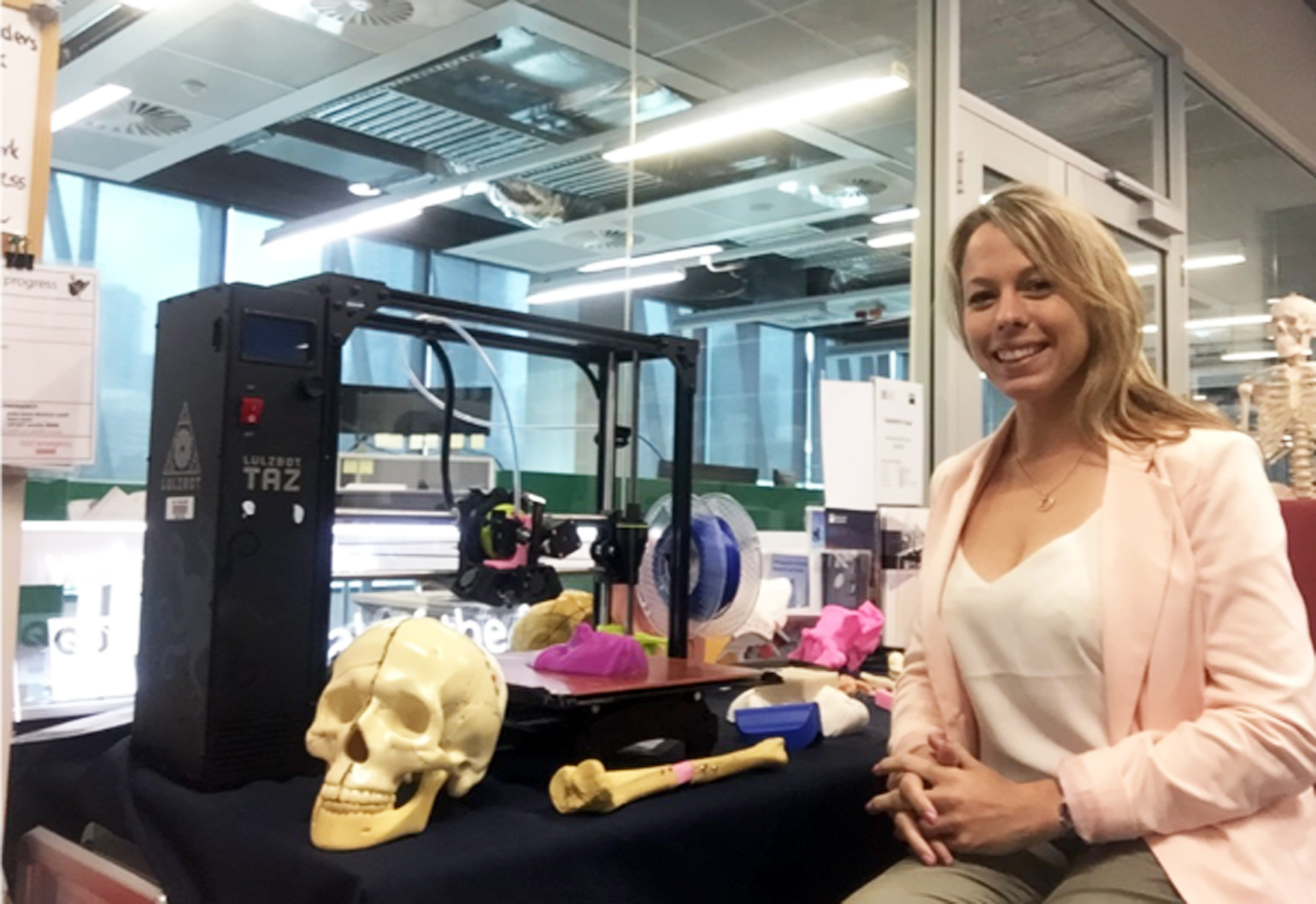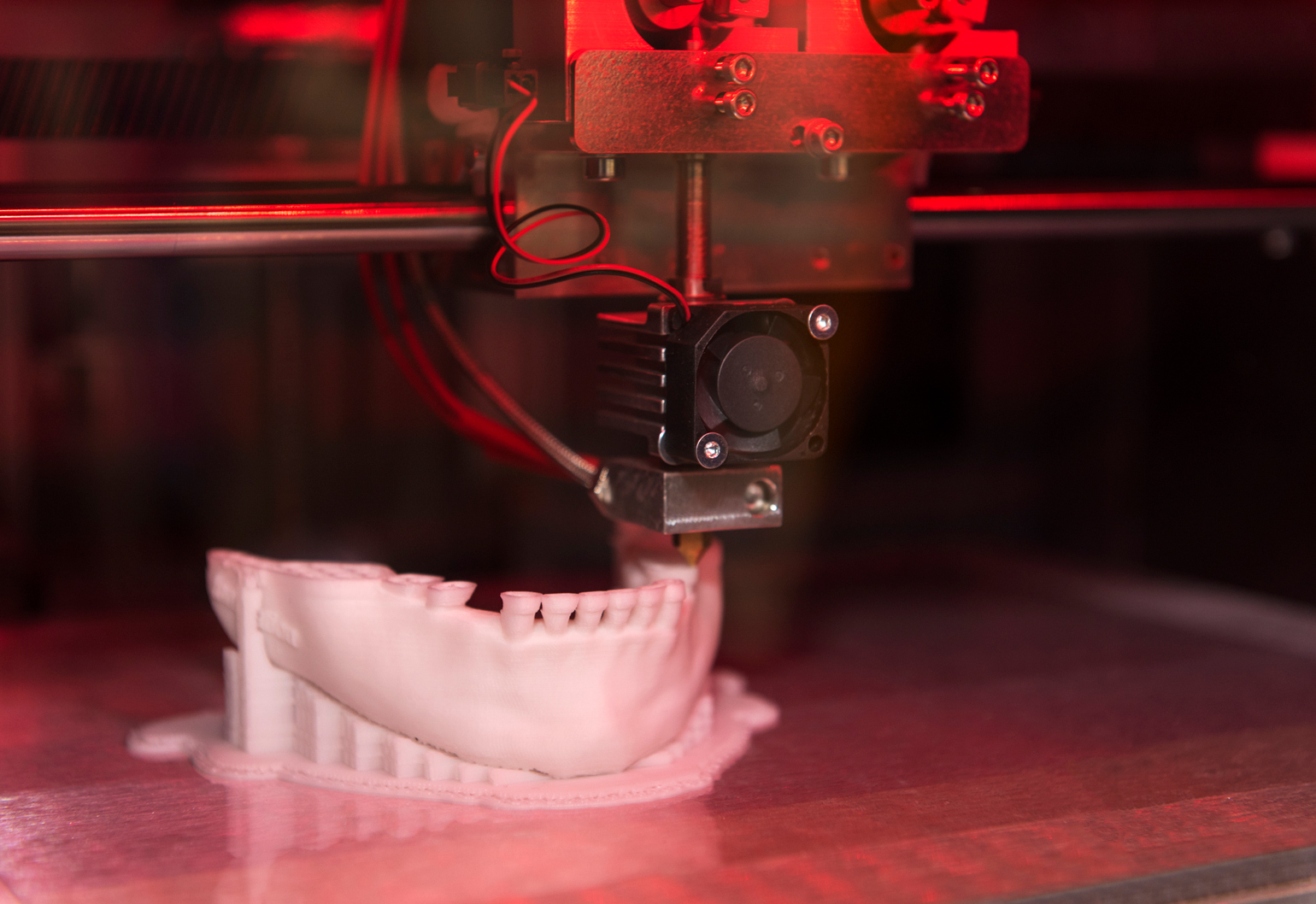Technology is transforming the world of healthcare, a move that promises to radically change the lives of both doctors and patients. Bioengineer Mathilde Desselle is keenly aware of this transition.
As the project manager of The Herston Biofabrication Institute at Queensland University of Technology (QUT), she is using 3D printing to combine her passion for biotechnology with her business acumen to help transform the future of healthcare.
Against the grain
A career in engineering wasn’t always on the cards for the bioengineer/business woman.
“My grandfather, my father and my uncle were all engineers,” Mathilde said, “so of course that’s not what I wanted to do at all. I wanted to be a vet.”

But for all of her resistance to following in her family’s footsteps, Mathilde acknowledged that her upbringing in the industrial French town of Dunkirk is also what ignited an interest in biotechnology.
“I absolutely loved biology – absolutely loved it. In the area I come from, there’s a lot of engineering happening in the space of agriculture and food processes as well as biomedicine; there was a lot happening in the space at the time and I thought ‘this is perfect’.”
3D printed partnership
Years later, after she had completed a double Masters in Engineering and Business and moved to Australia, Mathilde was serving as the board director for life sciences at Women in Technology. In the role, she ran a number of technology showcases and became interested in the role 3D printing could play in the healthcare sector.
Desselle decided she wanted to host a “really big 3D printing showcase”, and pulled at a few threads to see who was active in this space in Queensland. One name that came up was QUT’s Professor Mia Woodruff, who specialises in biomaterials.
Woodruff said yes to a collaboration, and the two ran a series of successful events. Then, two years ago Woodruff called Desselle to discuss a new opportunity.
“She said, ‘We’re creating a new research institute called The Heston Biofabrication Institute, which is going to be relying on biofabrication platform technologies like 3D scanning, 3D modelling and 3D printing, and we will implement these in the healthcare system. Would you like to be the project manager to create that institute?’,” Desselle said.
“I thought about it for about 10 seconds and I was on my way.”
What is biofabrication?
Desselle’s work at the institute leverages the major developments in 3D printing that have been made over the past 10 years.
“I think what happened with 3D printing is when it really started to explode 10 years ago people were saying, ‘Everybody’s going to have a 3D printer in their house and be making their own parts and whatnot’. It hasn’t happened,” Desselle said.
“But what has happened is industry really got interested in those additive manufacturing technologies and embraced them.”
In the world of healthcare, that technology is used in a number of ways.
“Biofabrication will start with 3D scanning or 3D imaging, which is going to be your input data,” Desselle explained.
“That might be information coming from hospital equipment such as CT scans, ultrasounds or an MRI, and that is going to be using data that would generate methods such as photogrammetry or time of flight 3D scanning.”
Those images are then rendered using 3D modelling, or “computational medicine”, as Desselle said, which can be used to create a virtual reality experience, as well as a blueprint for what later becomes a 3D printed product.
“That object can be a surgical guide, or it can be an implant, and that can be done with obviously a variety of different materials that are or are not living cells.”
Meeting demand
When the institute was founded, common wisdom was that surgeons were reluctant to embrace this kind of technology.

“When [Woodruff] and I started to get this project off the ground and started to engage with a lot of surgeons, people were telling us that these professionals are some really conservative people. They won’t like it, they’re not going to be interested in it,” Desselle said.
However, they quickly found the opposite was true.
“The surgeons love the tech and they’re really interested in it. They can see the potential to make it better for patients and to improve the performance of surgeries,” she said.
But despite buzz, the mechanics of scaling the product are undoubtedly the next challenge for the institute. However, Desselle said they are working towards long-term goals to make the technology more accessible and more entrenched in the healthcare system.
“The vision basically for the institute is that within 10 years we anticipate advanced manufacturing centres will form a seamless part of the patient care pathway,” she said.



